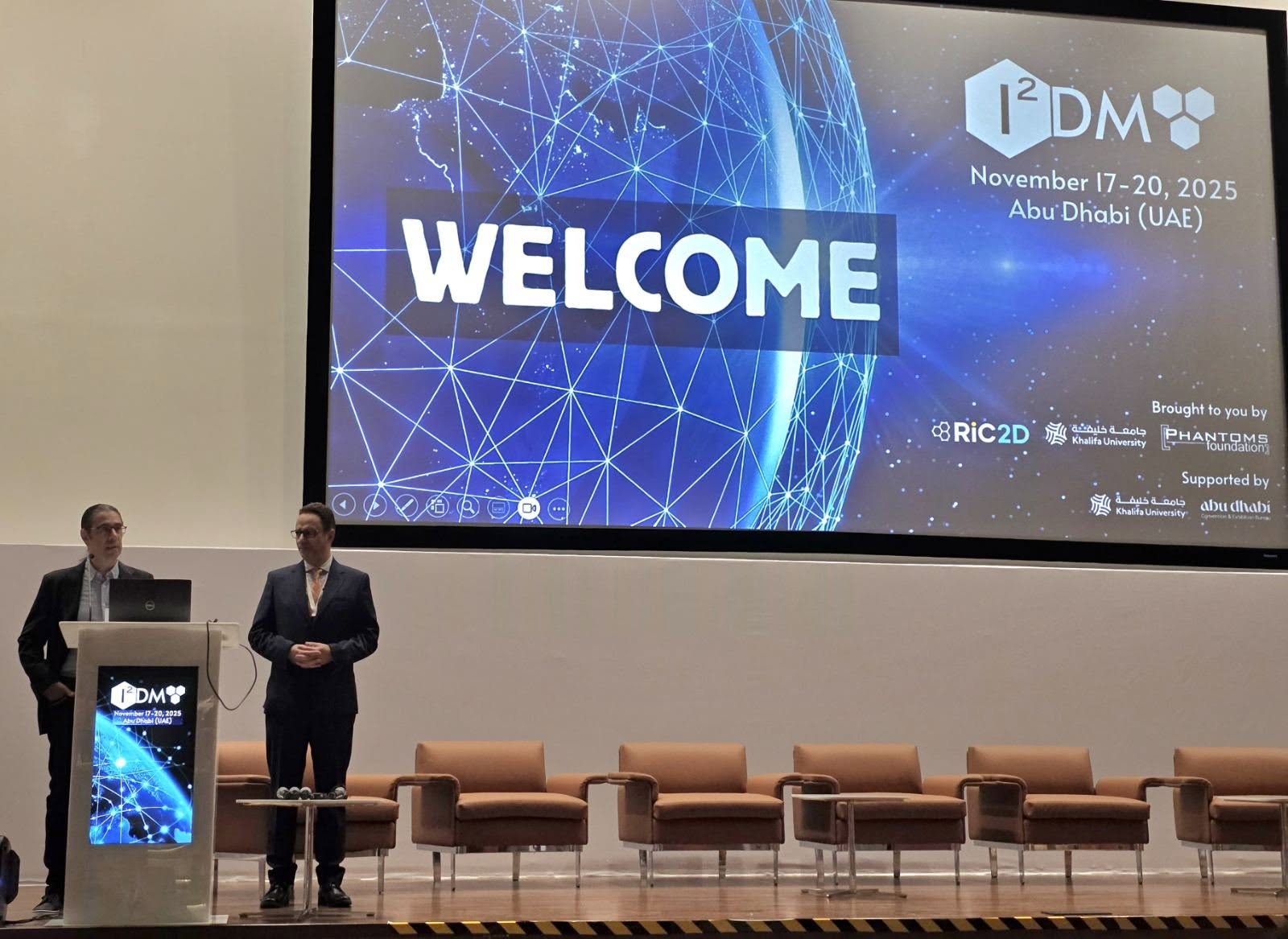First published: 30 March 2025 https://doi.org/10.1002/smll.202500807
Pulsed Electrochemical Exfoliation for an HF-FreeSustainable MXene Synthesis
Markus Ostermann1, Marko Piljevi´c1,2, Elahe Akbari 3, Prathamesh Patil 1, Veronika Zahorodna 4, Ivan Baginskiy 4, Oleksiy Gogotsi 4, Carsten Gachot 5, Manel Rodríguez Ripoll 2, Markus Valtiner 1,3 and Pierluigi Bilotto1,5
1 CEST GmbH, Centre for Electrochemical Surface Technology, A-2700 Wiener Neustadt, Austria
2 AC2T research GmbHA-2700 Wiener Neustadt, Austria
3 Applied Interface Physics, TU WienA-1040 Vienna, Austria
4 Carbon-Ukraine (Y-Carbon LLC) 04116 Kyiv, Ukraine
5 Institute of Engineering Design and Product Development, ResearchUnit Tribology (E307-05), TU WienA-1060 Vienna, Austria
MXenes are a 2D materials (2DM) class with high industrialization potential, owing to their superb properties and compositional variety. However, ensuring high etching efficiency in the synthesis process without involving toxic, hazardous or non-sustainable chemicals are challenging. In this work, an upscalable electrochemical MXene synthesis is presented. This novel protocol uses a non-toxic and sustainable sodium tetrafluoroborate/hydrochloric acid (NaBF4/HCl) electrolyte and increases etching efficiency by applying cathodic pulsing via pulse voltammetry. Hydrogen bubble formation restores electrochemical activity, and effectively supports 2D-sheet removal, allowing continuous etching at higher yields in situ. In detail, yields of up to 60% electrochemical MXene (EC-MXene) with no byproducts from a single exfoliation cycle are achieved.

EC-MXene had an excellent quality with high purity as assessed using chemical mapping by scanning electron microscopy with energy dispersive electron spectroscopy (SEM/EDX) and surface termination analysis performed with X-ray photoelectron spectroscopy (XPS) and, for the first time, with low energy ion scattering (LEIS). Further properties of EC-MXenes such as dimensions and adhesion energy of single flakes, vibrational peaks, and interlayer spacing are provided by atomic force microscopy (AFM), X-ray diffraction (XRD), Raman spectroscopy (Raman), and transmission electron microscopy (TEM) respectively. Pulsed electrochemical synthesis is key to surface reactivation at the electrodes' interface, which results in improved exfoliation and quality of EC-MXenes. This paves the way for scaling up and green industrialization of MXenes.
Cite and read more about this work:
M. Ostermann, M. Piljević, E. Akbari, P. Patil, V. Zahorodna, I. Baginskiy, O. Gogotsi, C. Gachot, M. Rodríguez Ripoll, M. Valtiner, P. Bilotto, Pulsed Electrochemical Exfoliation for an HF-Free Sustainable MXene Synthesis. Small 2025, 2500807. https://doi.org/10.1002/smll.202500807
Read more publications on related topics:




 Highlights
Highlights We are excited to share that our Carbon-Ukraine (Y-Carbon LLC) company participated in the I2DM Summit and Expo 2025 at Khalifa University in Abu-Dhabi! Huge thanks to Research & Innovation Center for Graphene and 2D Materials (RIC2D) for hosting such a high-level event.It was an incredible opportunity to meet brilliant researchers and innovators working on the next generation of 2D materials. The insights and energy from the summit will definitely drive new ideas in our own development.
We are excited to share that our Carbon-Ukraine (Y-Carbon LLC) company participated in the I2DM Summit and Expo 2025 at Khalifa University in Abu-Dhabi! Huge thanks to Research & Innovation Center for Graphene and 2D Materials (RIC2D) for hosting such a high-level event.It was an incredible opportunity to meet brilliant researchers and innovators working on the next generation of 2D materials. The insights and energy from the summit will definitely drive new ideas in our own development. Carbon-Ukraine team had the unique opportunity to visit XPANCEO - a Dubai-based deep tech startup company that is developing the first smart contact lenses with AR vision and health monitoring features, working on truly cutting-edge developments.
Carbon-Ukraine team had the unique opportunity to visit XPANCEO - a Dubai-based deep tech startup company that is developing the first smart contact lenses with AR vision and health monitoring features, working on truly cutting-edge developments. Our Carbon-Ukraine team (Y-Carbon LLC) are thrilled to start a new RIC2D project MX-Innovation in collaboration with Drexel University Yury Gogotsi and Khalifa University! Amazing lab tours to project collaborators from Khalifa University, great discussions, strong networking, and a wonderful platform for future collaboration.
Our Carbon-Ukraine team (Y-Carbon LLC) are thrilled to start a new RIC2D project MX-Innovation in collaboration with Drexel University Yury Gogotsi and Khalifa University! Amazing lab tours to project collaborators from Khalifa University, great discussions, strong networking, and a wonderful platform for future collaboration.
 MXenes potential applications include sensors, wound healing materials, and drug delivery systems. A recent study explored how different synthesis methods affect the safety and performance of MXenes. By comparing etching conditions and intercalation strategies, researchers discovered that fine-tuning the surface chemistry of MXenes plays a crucial role in improving biocompatibility. These results provide practical guidelines for developing safer MXenes and bring the field one step closer to real biomedical applications.
MXenes potential applications include sensors, wound healing materials, and drug delivery systems. A recent study explored how different synthesis methods affect the safety and performance of MXenes. By comparing etching conditions and intercalation strategies, researchers discovered that fine-tuning the surface chemistry of MXenes plays a crucial role in improving biocompatibility. These results provide practical guidelines for developing safer MXenes and bring the field one step closer to real biomedical applications. An excellent review highlighting how MXene-based sensors can help tackle one of today’s pressing environmental challenges — heavy metal contamination. Excited to see such impactful work moving the field of environmental monitoring and sensor technology forward!
An excellent review highlighting how MXene-based sensors can help tackle one of today’s pressing environmental challenges — heavy metal contamination. Excited to see such impactful work moving the field of environmental monitoring and sensor technology forward!
 Carbon-Ukraine team was truly delighted to take part in the kickoff meeting of the ATHENA Project (Advanced Digital Engineering Methods to Design MXene-based Nanocomposites for Electro-Magnetic Interference Shielding in Space), supported by NATO through the Science for Peace and Security Programme.
Carbon-Ukraine team was truly delighted to take part in the kickoff meeting of the ATHENA Project (Advanced Digital Engineering Methods to Design MXene-based Nanocomposites for Electro-Magnetic Interference Shielding in Space), supported by NATO through the Science for Peace and Security Programme. Exellent news, our joint patent application with Drexel University on highly porous MAX phase precursor for MXene synthesis published. Congratulations and thanks to all team involved!
Exellent news, our joint patent application with Drexel University on highly porous MAX phase precursor for MXene synthesis published. Congratulations and thanks to all team involved! Our team was very delighted to take part in International Symposium "The MXene Frontier: Transformative Nanomaterials Shaping the Future" – the largest MXene event in Europe this year!
Our team was very delighted to take part in International Symposium "The MXene Frontier: Transformative Nanomaterials Shaping the Future" – the largest MXene event in Europe this year!  Last Call! Have you submitted your abstract for IEEE NAP-2025 yet? Join us at the International Symposium on "The MXene Frontier: Transformative Nanomaterials Shaping the Future" – the largest MXene-focused conference in Europe this year! Final Submission Deadline: May 15, 2025. Don’t miss this exclusive opportunity to showcase your research and engage with world leaders in the MXene field!
Last Call! Have you submitted your abstract for IEEE NAP-2025 yet? Join us at the International Symposium on "The MXene Frontier: Transformative Nanomaterials Shaping the Future" – the largest MXene-focused conference in Europe this year! Final Submission Deadline: May 15, 2025. Don’t miss this exclusive opportunity to showcase your research and engage with world leaders in the MXene field! We are excited to announce the publication of latest review article on MXenes in Healthcare. This comprehensive review explores the groundbreaking role of MXenes—an emerging class of 2D materials—in revolutionizing the fields of medical diagnostics and therapeutics. Read the full article here: https://doi.org/10.1039/D4NR04853A.
We are excited to announce the publication of latest review article on MXenes in Healthcare. This comprehensive review explores the groundbreaking role of MXenes—an emerging class of 2D materials—in revolutionizing the fields of medical diagnostics and therapeutics. Read the full article here: https://doi.org/10.1039/D4NR04853A. Congratulations to all collaborators with this interesting joint work!
Congratulations to all collaborators with this interesting joint work!